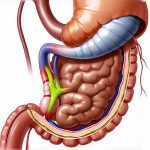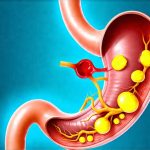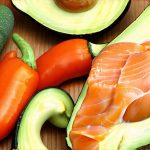Nausea is one of the most debilitating symptoms someone can experience, profoundly impacting quality of life. For individuals navigating chronic conditions like Gastroesophageal Reflux Disease (GERD) or Functional Dyspepsia (FD), nausea isn’t just an occasional discomfort; it’s often a persistent companion that complicates daily routines and diminishes well-being. It’s vital to understand that managing nausea in these contexts requires more than simply avoiding triggering foods. It demands a nuanced, dietary approach focused on soothing the digestive system, reducing irritation, and supporting optimal function. This article will explore practical diet strategies tailored for people living with GERD or FD who struggle with persistent nausea, offering insights into food choices, meal timing, and overall eating habits that can significantly alleviate symptoms.
The challenge lies in the complex interplay between these conditions and nausea. In GERD, stomach acid frequently backs up into the esophagus, causing irritation that can lead to nausea, especially after meals. With Functional Dyspepsia, the root cause isn’t always identifiable—it’s often related to delayed gastric emptying, visceral hypersensitivity (increased sensitivity to normal digestive processes), or altered gut motility. This makes pinpointing specific triggers more difficult and requires a broader approach to dietary management. Importantly, these are conditions where individual tolerance varies greatly, meaning what bothers one person may not bother another. Therefore, a personalized approach – often guided by a healthcare professional – is critical for long-term success. Considering best breakfast options can also be helpful to start your day right.
Understanding the Digestive Landscape: GERD & FD
GERD and Functional Dyspepsia differ fundamentally in their underlying mechanisms, but both frequently result in nausea as a prominent symptom. GERD stems from a weakened lower esophageal sphincter (LES), the muscle that normally prevents stomach acid from flowing back up. This reflux can irritate the esophagus, triggering not only heartburn but also feelings of nausea, particularly after consuming acidic or fatty foods. The chronic inflammation associated with GERD can further exacerbate sensitivity and contribute to persistent nausea even when reflux isn’t actively occurring. Dietary modifications aim to reduce acid production, minimize LES weakening, and protect the esophageal lining. Best cooking methods can help lessen symptoms as well.
Functional Dyspepsia, on the other hand, is a disorder of digestion characterized by symptoms like bloating, early satiety (feeling full quickly), epigastric pain, and – crucially – nausea. The problem isn’t typically structural or inflammatory; rather it’s related to how the stomach empties, how sensitive the gut is to normal processes, or how well the digestive system coordinates its functions. Because of this complexity, identifying specific food triggers can be exceptionally challenging. Dietary strategies for FD focus on easing gastric emptying, reducing intestinal gas production, and minimizing stimulation of visceral hypersensitivity. It might also be helpful to explore sleep tips if you have functional gut disorders.
A key distinction impacting dietary choices is that GERD often benefits from a lower-fat diet to reduce LES pressure, while FD may benefit more from a low FODMAP (Fermentable Oligosaccharides, Disaccharides, Monosaccharides And Polyols) approach to address gas production and bloating which can exacerbate nausea. Both conditions require careful attention to meal size, eating speed, and hydration levels.
Dietary Pillars for Nausea Management
The cornerstone of managing nausea with diet is identifying and eliminating personal triggers. This isn’t always easy, requiring a period of mindful observation and potentially an elimination diet under the guidance of a healthcare professional. However, certain general principles apply to both GERD and FD:
- Small, Frequent Meals: Large meals overwhelm the digestive system, increasing the risk of reflux in GERD and exacerbating symptoms in FD. Aim for 5-6 small meals throughout the day instead of three large ones.
- Slow & Mindful Eating: Rushing through a meal can lead to swallowing excess air, contributing to bloating and nausea. It also doesn’t allow sufficient time for chewing, placing extra burden on the stomach.
- Hydration is Key: Dehydration can worsen nausea. Sip water throughout the day, but avoid drinking large amounts with meals as this can dilute digestive enzymes and potentially increase reflux.
- Limit Highly Processed Foods: These often contain additives, high levels of fat, or ingredients that trigger inflammation, exacerbating both conditions and increasing nausea risk.
The Role of Specific Food Groups
Certain food groups are more likely to contribute to nausea in people with GERD or FD. Understanding these relationships allows for informed dietary choices:
- Fats: High-fat foods slow down gastric emptying (potentially beneficial in some FD cases, but generally problematic in GERD) and can weaken the LES, increasing reflux. Opt for lean protein sources and healthy fats in moderation.
- Acids: Citrus fruits, tomatoes, vinegar-based dressings – while nutritious – can irritate an already sensitive esophagus in GERD sufferers. In FD, acidic foods may aggravate visceral hypersensitivity. Best diet options might be helpful if you have citric acid sensitivity.
- Spicy Foods: Capsaicin, the compound that gives chili peppers their heat, can stimulate acid production and irritate the digestive tract.
- Carbonated Beverages: Introduce excess gas into the system, potentially leading to bloating and nausea in both conditions.
- Caffeine & Alcohol: Both can relax the LES (GERD) and increase stomach acidity, and may exacerbate visceral hypersensitivity (FD).
Conversely, some foods are generally well-tolerated and can even help soothe a troubled digestive system:
- Bland Foods: Toast, rice, bananas, applesauce – easily digestible and less likely to trigger symptoms.
- Ginger: A natural antiemetic (anti-nausea agent) that has been shown to reduce nausea effectively. Can be consumed as tea, ginger ale (in moderation), or grated into meals.
- Chamomile Tea: Known for its calming properties, chamomile can help relax the digestive system and reduce nausea.
Navigating Low FODMAP & GERD Diets Simultaneously
For individuals with both Functional Dyspepsia and GERD, navigating dietary restrictions can be exceptionally complex. A low FODMAP diet is often recommended for FD to minimize gas production and bloating, while a traditional GERD diet focuses on reducing acid reflux. These diets aren’t mutually exclusive, but require careful planning:
- Prioritize Acid Reflux Reduction: Given that untreated GERD can contribute to nausea, addressing reflux should be the initial focus. Implement strategies like elevating the head of your bed, avoiding late-night meals, and limiting trigger foods for GERD (fatty foods, chocolate, caffeine).
- Introduce Low FODMAP Gradually: If symptoms persist despite managing GERD, consider a carefully implemented low FODMAP diet under the guidance of a registered dietitian. Start by eliminating high FODMAP foods one at a time to identify personal triggers.
- Monitor for Cross-Reactivity: Some foods are both high in FODMAPs and GERD triggers (e.g., garlic, onions). Pay attention to how your body responds to these foods specifically.
- Focus on Gut Health: Incorporate probiotic-rich foods (if tolerated) or consider a probiotic supplement to support a healthy gut microbiome, which can improve both digestion and reduce visceral hypersensitivity. You may want to learn about probiotics benefits.
Ultimately, the most effective diet strategy is one tailored to your individual needs and tolerances. Keeping a detailed food diary, tracking symptoms, and working closely with a healthcare team are essential for developing a personalized plan that minimizes nausea and improves your quality of life. Exercise tips can also help to improve overall health. Remember, dietary changes aren’t about deprivation; they’re about empowering yourself to take control of your digestive health. Also consider dairy alternatives if you are sensitive to dairy products.


















